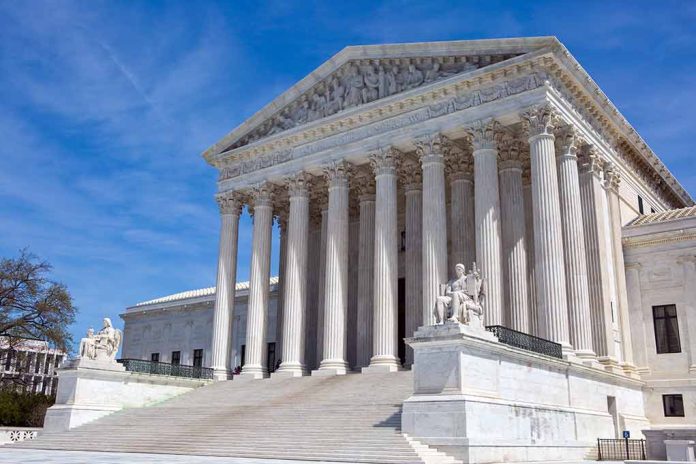
Senate Democrats urge Justice Sotomayor to retire as Trump’s victory is confirmed, sparking controversy and strategic concerns.
At a Glance
- Senate Democrats consider pressuring Justice Sotomayor to resign before Trump takes office
- Concerns arise over Sotomayor’s health and the tight timeline for confirming a replacement
- Debate highlights Democratic strategy to maintain ideological balance on the Supreme Court
- Sotomayor expresses intent to continue serving despite pressure
Democrats Grapple with Supreme Court Strategy
In the wake of Donald Trump’s electoral victory and the loss of their Senate majority, Democrats find themselves in a heated debate over the future of Supreme Court Justice Sonia Sotomayor. The discussion centers on whether to pressure the 70-year-old justice to resign before President-elect Trump takes office, allowing President Biden to appoint a younger successor and potentially secure a long-term liberal presence on the nation’s highest court.
The debate has intensified as Democrats weigh the risks and benefits of such a move. Some senators are hesitant to urge Sotomayor’s resignation, citing her type 1 diabetes and age as factors that make the decision particularly sensitive. Others argue that the tight timeline and potential roadblocks in the confirmation process make the strategy unfeasible.
Justice Sonia Sotomayor has no plans to resign from Supreme Court, sources tell ABC News. https://t.co/224XD32HwA
— ABC News (@ABC) November 11, 2024
Challenges and Considerations
The process of replacing Justice Sotomayor would need to be completed before the 119th Congress is sworn in on January 3, leaving little time for a smooth transition. A former Senate Democratic aide expressed skepticism about the plan’s viability, stating, “That’s insane. That’s not going to happen.”
Some senators have proposed alternative strategies, such as Sotomayor resigning conditionally upon a replacement being appointed. However, this approach raises concerns about the potential for a vacancy if the nominee isn’t confirmed before the next president takes office. The packed congressional schedule and the need for sufficient Senate votes for a quick confirmation add to the complexity of the situation.
Potential Replacements and Bipartisan Support
As discussions continue, Washington, DC, Circuit Judge J. Michelle Childs has emerged as a potential moderate replacement for Sotomayor. Childs has garnered bipartisan support, including from President Biden and Republican Senator Lindsey Graham.
Despite the strategic considerations, Justice Sotomayor has made it clear that she intends to remain on the court, emphasizing the importance of her continued participation in the court’s deliberations. This stance echoes the commitment of the late Justice Ruth Bader Ginsburg, who chose to serve until her passing, resulting in her replacement by a conservative justice.
Broader Implications and Criticism
The debate surrounding Sotomayor’s potential retirement has sparked criticism from both progressives and conservatives. Some view the pressure as “ableist,” while others argue that such discussions disrespect the justices and their service to the country.
As the debate continues, Democrats must carefully weigh the potential consequences of their actions. The outcome of this strategic deliberation could have far-reaching implications for the ideological balance of the Supreme Court and the future of American jurisprudence.
Sources:
Senate Dems debate trying to push out Justice Sonia Sotomayor before Trump takes office: report
Justice Sonia Sotomayor faces pressure to retire ahead of Trump taking office: report
Sotomayor to Dems: Don’t Eyeball Her SCOTUS Seat – She’s Staying














